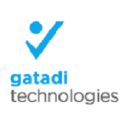Session 1: Design a DevOpsstrategy
Migration and consolidation strategy - DevOpstools
- Analyze existing artifact - deployment packages, NuGet, Maven, npm
- Container repositories
- Test management tools
- Work managementtools
- Recommend migration and integration strategies o Artifact repositories
- Source control
- Test management
- Workmanagement
Session 2: Understanding Agile work management approach
- Identify and recommend project metrics, KPIs, and DevOps measurements
- Agile work management
- Mentor team members on Agile techniques and practices
- Scaling Agile practices
- Understanding in-team and cross-team collaboration mechanisms Session 3: Design a quality strategy
- Analyze existing quality environment
- Working quality metrics
- Feature flag lifecycle
- Measuring and managing technical debt
- Changesto team structure to optimize quality
- Recommend performance testing strategy Session 4: Design a secure development process
- Inspect and validate code base for compliance
- Inspect and validate infrastructure for compliance
- Secure developmentstrategy
- Integrate code security validation - static code analysis
- Integrate infrastructure security validation Session 5: Design a tool integration strategy
- To design a license managementstrategy
- VSTS users
- concurrent pipelines
- test environments,
- open source software licensing
- third-party DevOpstools and services
- package management licensing
- Design a strategy for end-to-end traceability from work itemsto working software
- Integrating monitoring and feedback to development teams
- Authentication and accessstrategy
- Integrating on-premises and cloud resources
Session 6: Implement DevOps development processes Design a version controlstrategy
- Working with Branching models
- Introduction to Version control systems
- Understaning Code flow strategy
Session 7: Implement and integrate source control
- Externalsource control
- Integrate source control into third-party continuousintegration and continuous deployment (CI/CD)systems Session 8: Implement and manage build infrastructure
- Private and hosted agents
- Working with third party build systems
- Concurrent pipelines
- Manage Azure pipeline configuration
- Agent queues
- Service endpoints
- Pools
- Webhooks
Session 9: Implement code flow
- Pull requeststrategies
- Branch and fork strategies
- configure branch policies
Session 10: Managing application configuration and secrets
- Secure and compliant development process
- General (non-secret) configuration data
- secrets, tokens, and certificates
- applications configurations
- Web App
- Azure Kubernetes Service
- containers
- Secrets management
- Web App
- Azure Kubernetes Service
- containers
- Azure Key Vault
- Managing security and compliance in the pipeline
Session 11: Implement continuousintegration Manage code quality and security policies
- Monitor code quality
- Configure build to report on code coverage
- Automated test quality
- Testsuites and categories
- Monitor quality of tests
- Security analysistools
- SonarQube,
- White Source Bolt
- Open Web Application Security Project Session 12: Implement a container build strategy
- create deployable images
- Docker
- Hub
- Azure Container Registry
- Docker multi-stage builds Session13: Implement a build strategy
- Design build triggers, tools, integrations, and workflow
- Hybrid build process
- Multi-agent builds
- Build tools and configuration (e.g. Azure Pipelines, Jenkins)
- set up an automated build workflow
Session 14: Implement continuous delivery Design a release strategy
- Release tools
- Identify and recommend release approvals and gates
- Measuring quality of release and release process
- Recommend strategy for release notes and documentation
- select appropriate deployment pattern
Session 15: Set up a release management workflow
- Automate inspection of health signalsfor release approvals by using release gates
- Configure automated integration and functional test execution
- Create a release pipeline
- Azure Kubernetes Service
- WebApp
- Create multi-phase release pipelines
- Integrate secrets with release pipeline
- Provision and configure environments
- Manage and modularize tasks and templates - task and variable groups Session16: Implement an appropriate deployment pattern
- Implement blue-green deployments
- Implement canary deployments
- Implement progressive exposure deployments
- Scale a release pipeline to deploy to multiple endpoints
- Deployment groups
- Azure Kubernetes Service
Session 17: Implement dependency management Design a dependency managementstrategy
- Artifact management tools and practices(Azure Artifacts, npm, Maven, Nuget)
- Abstract common packagesto enable sharing and reuse
- Inspect codebase to identify code dependenciesthat can be converted to packages
- Standardized package types and versions acrossthe solution
- Refactor existing build pipelinesto implement version strategy that publishes packages Session 18: Manage security and compliance
- Inspect open source software packages for security and license compliance to align with corporate standards(e.g., GPLv3)
- Configure build pipeline to access package security and license rating (e.g., Black Duck, White Source)
- Configure secure accessto package feeds Session 19: Implement Infrastructure as Code (IaC)
- Create nested resource templates
- Manage secretsin resource templates
- Provision Azure resources
- Recommend an Infrastructure as Code (IaC) strategy
- Recommend appropriate technologies for configuration management
- ARM Templates
- Terraform
- Ansible
Session 20: Manage Azure Kubernetes Service infrastructure
- Provision Azure Kubernetes Service – Terraform CLI
- Create deployment file for publishing to Azure Kubernetes Service - kubectl, Helm
- Develop a scaling plan







